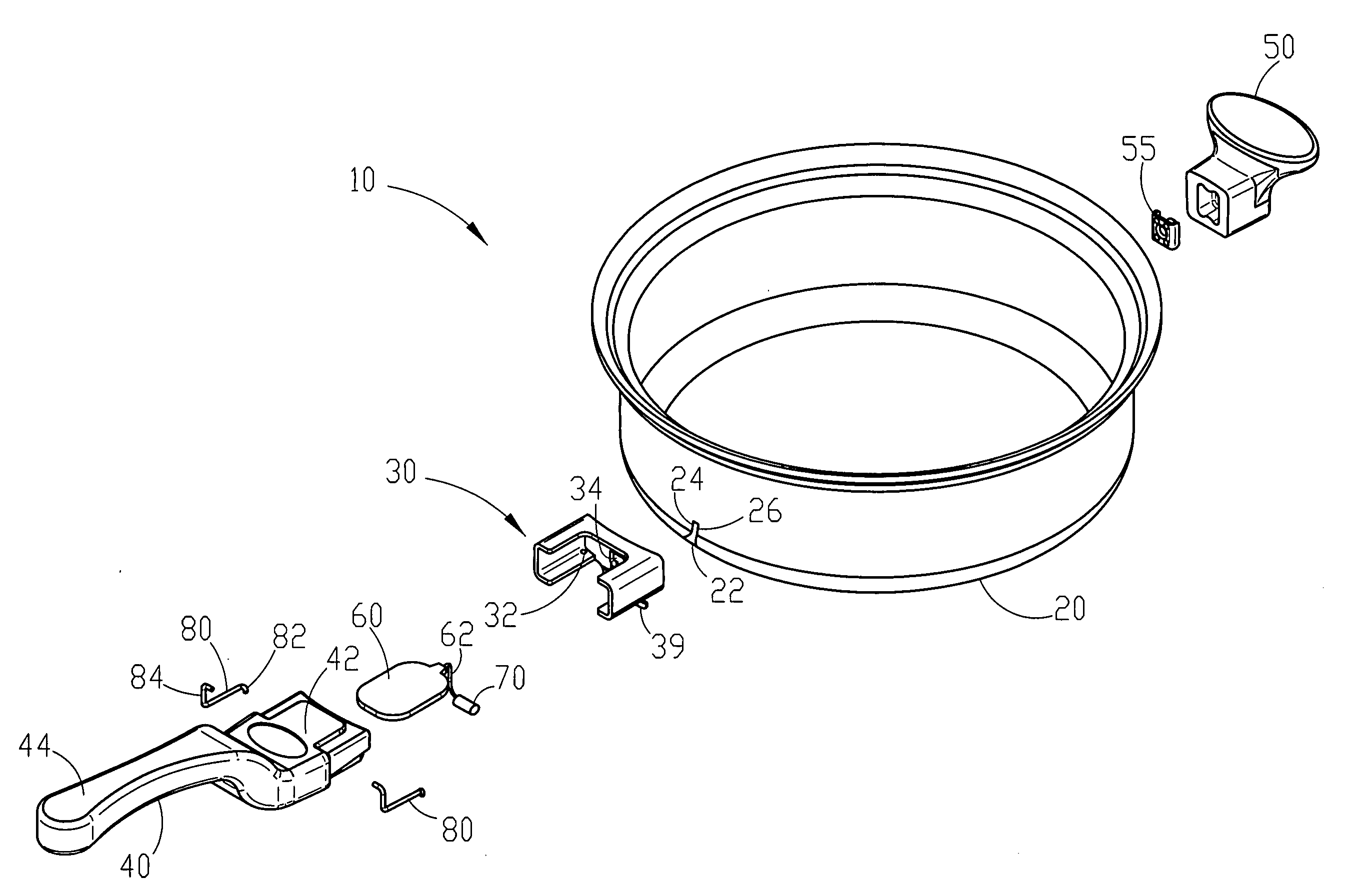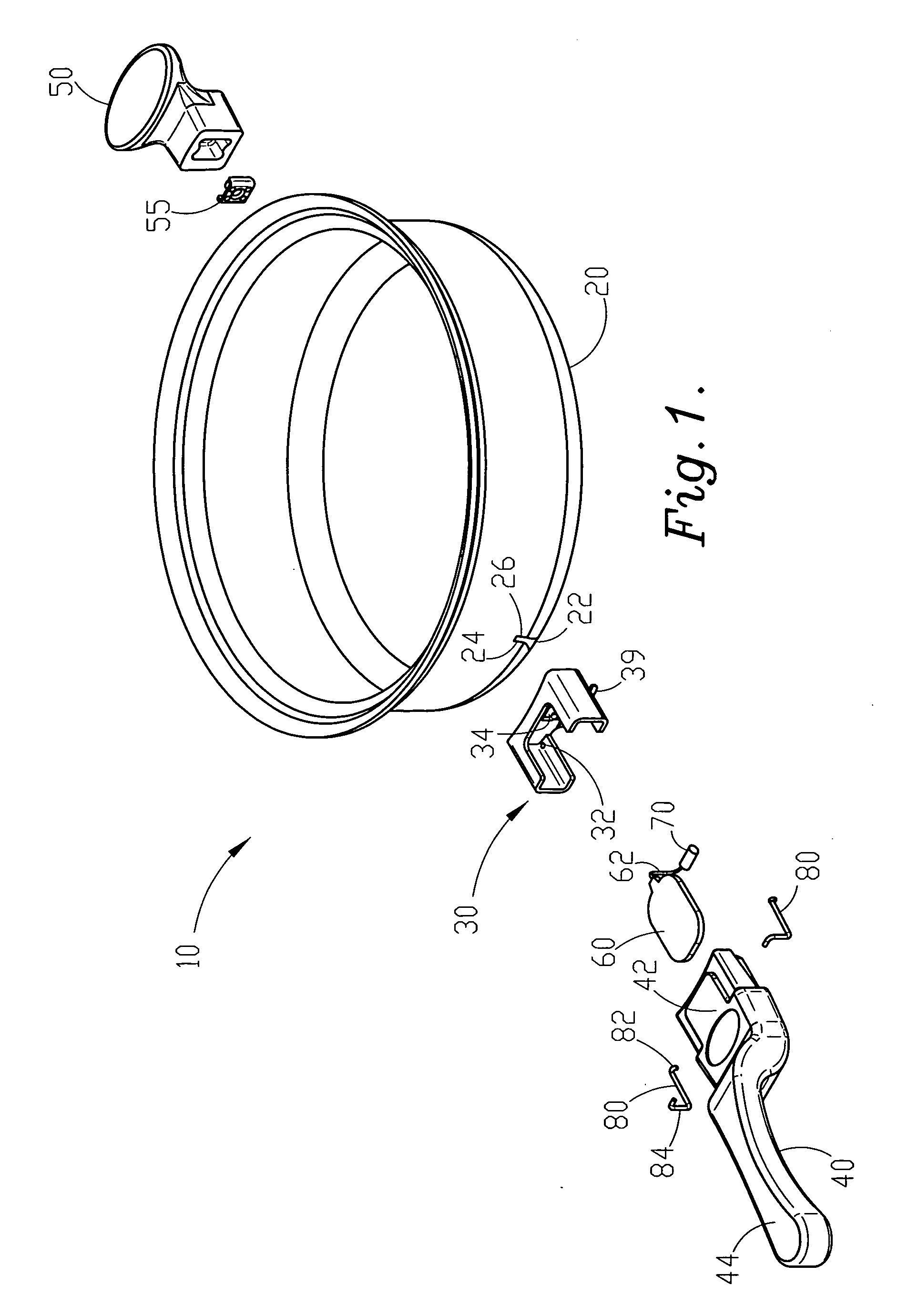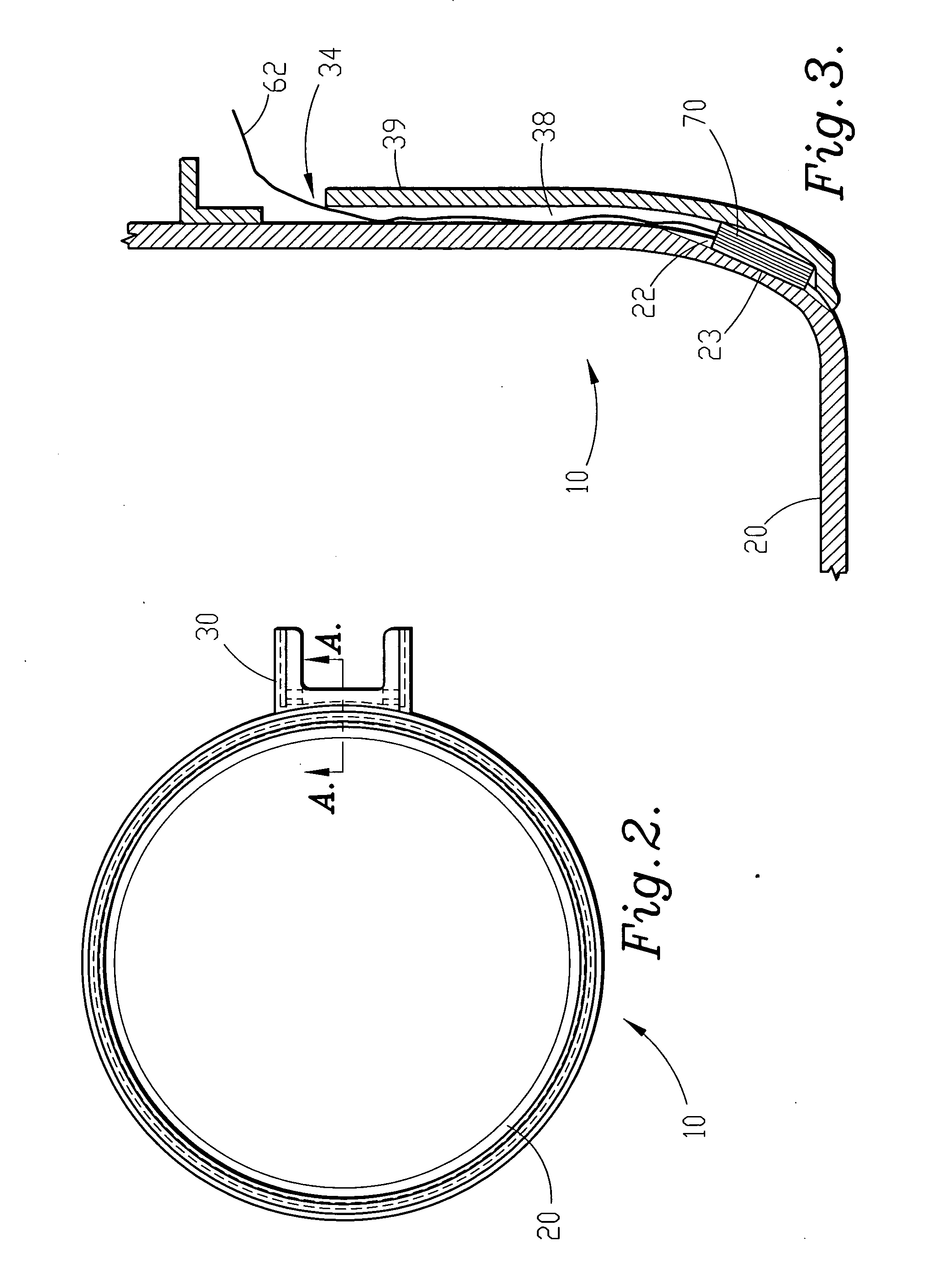Radio frequency identification controlled heatable objects
a technology of radio frequency identification and heatable objects, applied in the direction of electric/magnetic/electromagnetic heating, near-field systems using receivers, instruments, etc., can solve the problems of reducing the service life of the tag, so as to maximize the strength of the signal transmitted, the effect of maximizing the life of the tag
- Summary
- Abstract
- Description
- Claims
- Application Information
AI Technical Summary
Benefits of technology
Problems solved by technology
Method used
Image
Examples
first embodiment
[0048] Referring to FIGS. 1 through 3, an RFID controlled cookware object, in the form of a frying pan is shown. FIG. 1 shows an exploded view of cookware object 10 including pan body 20, primary handle 40, and secondary (helper) handle 50. Primary handle 40 is connected to pan body 20 via bracket / receiver 30. Spring clips 80 releasably secure primary handle 40 to receiver 30 through the engagement of clip ends 82 with holes 32 in receiver 30. Helper handle 50 is connected to pan body 20 via bracket 55. An RFID tag, 60, is connected to temperature sensor 70 via a pair of wires, 72. RFID tag 60 is stored in a cavity located within handle 40. Wires 72 extend from the interior of the cavity through a portal 34 of receiver 30 to sensor 70 which is generally located between receiver 30 and the exterior of pan body 20 within notch 22 formed into the side of pan body 20.
[0049] Pan body 20 is fabricated from materials and manufactured by means well known in the art. Types of materials commo...
second embodiment
[0071]FIGS. 19 through 23 show several variations of pan 210 having a slab attached to the bottom of pan body 220, in which slot 222 is formed in slab 226 instead of being milled in pan body 220. Locating slot 222 within slab 226 allows for a thinner wall thickness for pan body 220, and eliminates the need to perform any machining operations on pan body 220 once the body is manufactured (other than braising slab 226 to pan body 220). In a preferred embodiment of the slab base pan having a slot formed within the slab, slab 226 is constructed of an aluminum layer (or aluminum alloy) and a steel layer (although any other suitable material can be utilized for slab 226 depending upon the conductive, inductive and various other properties desired). Slot 222 is formed in the aluminum layer to position temperature sensor 70 in contact with the heat conductive aluminum to provide a more accurate temperature reading. The steel layer is positioned opposite the side of slab 226 that contacts pa...
PUM
 Login to View More
Login to View More Abstract
Description
Claims
Application Information
 Login to View More
Login to View More - R&D
- Intellectual Property
- Life Sciences
- Materials
- Tech Scout
- Unparalleled Data Quality
- Higher Quality Content
- 60% Fewer Hallucinations
Browse by: Latest US Patents, China's latest patents, Technical Efficacy Thesaurus, Application Domain, Technology Topic, Popular Technical Reports.
© 2025 PatSnap. All rights reserved.Legal|Privacy policy|Modern Slavery Act Transparency Statement|Sitemap|About US| Contact US: help@patsnap.com



